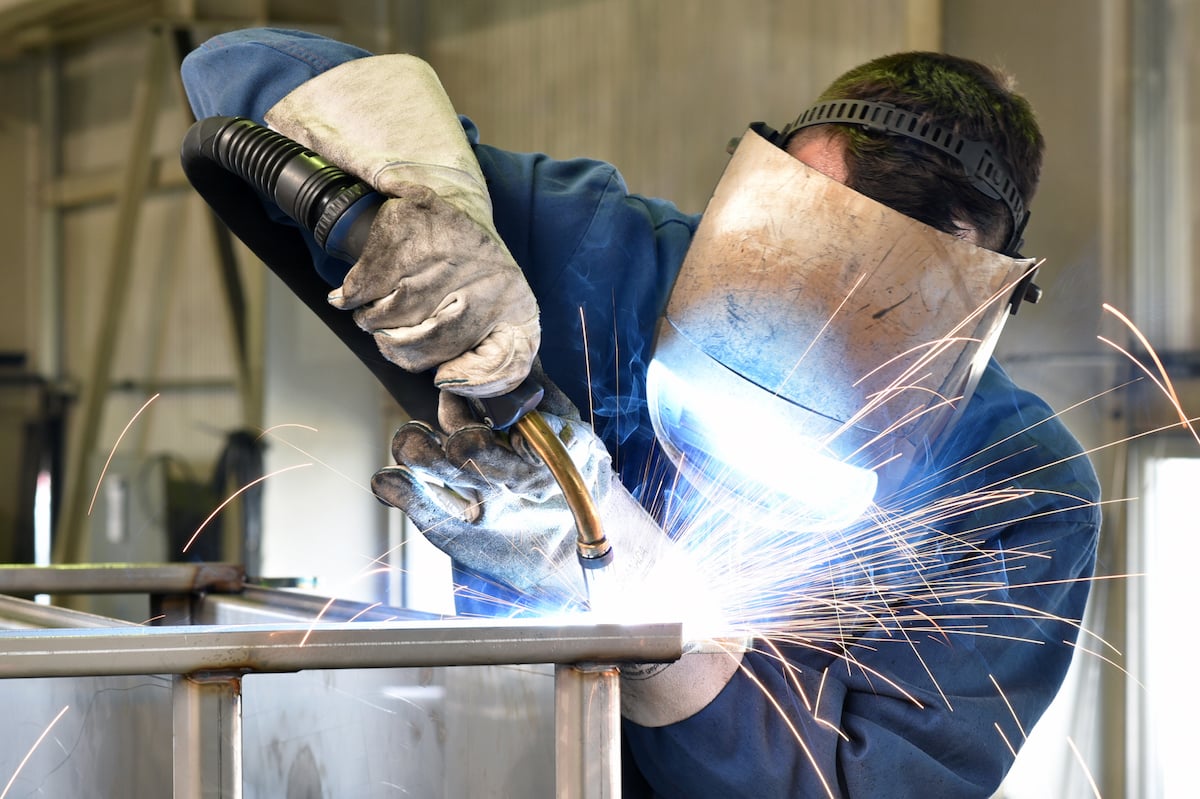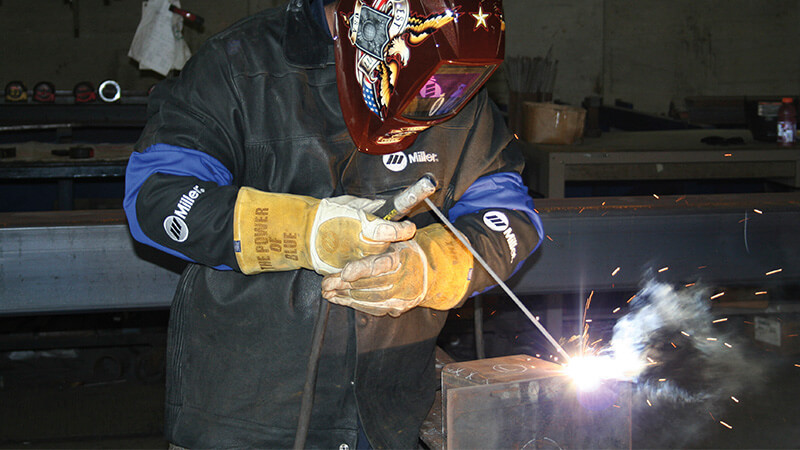Quick tips for poor fusion from Montana Mobile Welding and Repair
Wiki Article
Common Welding Repair Service Issues and Just How to Address Them Successfully
Welding repair services usually encounter a variety of concerns that can threaten the stability of the final item. Usual troubles consist of inadequate penetration, porosity, and misalignment, among others. Each problem provides one-of-a-kind obstacles that need particular approaches for resolution. Comprehending these concerns is vital for welders aiming to improve their skills and outcomes. This conversation will certainly discover these usual welding repair work issues and efficient approaches to address them.Inadequate Infiltration
Poor infiltration happens when the weld metal fails to fully fuse with the base material, causing weak joints and possible architectural failings. This concern frequently originates from insufficient warmth input, inaccurate electrode angle, or incorrect welding rate. Welders may encounter inadequate infiltration because of a miscalculation of the necessary criteria for a details product density or type. In addition, contamination on the base product's surface can hinder effective bonding, intensifying the trouble. To resolve insufficient penetration, welders ought to ensure proper setups on their devices and maintain a tidy job surface. Regular assessment of welds is suggested to determine any kind of shortages early, permitting timely corrections and the prevention of jeopardized structural integrity in bonded settings up.Porosity
Porosity is a common defect in welded joints that manifests as little gas bubbles trapped within the weld steel. This flaw can compromise the integrity of the weld, bring about decreased toughness and possible failure under anxiety. Fabrication. Porosity typically occurs from contamination, wetness, or incorrect welding methods, which allow gases to run away right into the liquified weld swimming pool. To deal with porosity, welders should ensure appropriate surface preparation, preserve a clean workplace, and use ideal welding criteria. In addition, selecting the ideal filler product and shielding gas can reduce gas entrapment. Normal evaluation and testing of welds can assist recognize porosity early, ensuring timely rehabilitative actions are taken, therefore protecting the high quality and integrity of the welded frameworkImbalance
Misalignment in welding can arise from various variables, including incorrect configuration and thermal development. Comprehending the source is crucial for effective resolution. A number of correction methods are offered to realign components and ensure architectural honesty.Reasons for Imbalance
Welding imbalance frequently originates from a variety of underlying problems that can endanger architectural stability. One main cause is improper fit-up of components before welding, which can lead to spaces and unequal surface areas. Variations in thermal growth throughout the welding process can also result in distortion, specifically if the products being joined have various coefficients of growth. Furthermore, insufficient fixturing and clamping may fall short to hold parts securely in position, bring about movement during welding. Poorly maintained tools, including welding machines and tools, may introduce incongruities in the weld bead, additional adding to imbalance. Operator mistake, stemming from insufficient training or experience, can additionally play a considerable function in creating misaligned welds.
Modification Strategies Offered
Attending to imbalance properly requires a combination of restorative methods customized to the particular issues available. One common technique is using components or jigs to hold elements in the proper setting throughout welding, making certain consistent alignment. Furthermore, pre-heating the materials can assist lower distortion and improve fit-up. For substantial misalignment, mechanical realignment strategies, such as making use of hydraulic jacks or clamps, can be used to correct the position prior to welding. Post-weld heat therapy might likewise be necessary to relieve tensions brought on by imbalance. Mindful assessment and adjustment throughout the arrangement phase can stop imbalance issues from ending up being significant issues, promoting a smoother welding process and enhancing general structural honesty.Distortion
Distortion is an usual challenge in welding that can occur from various factors, including uneven heating & cooling. Understanding the sources of distortion is vital for applying reliable avoidance strategies. Resolving this concern not only enhances structural stability but likewise boosts the overall top quality of the weld.Sources of Distortion
When based on the intense warmth of welding, products often go through modifications that can bring about distortion. This phenomenon largely emerges from thermal expansion and tightening throughout the welding process. As the weld location warms up, the material increases; upon cooling, it gets, which can develop internal tensions. Furthermore, irregular heating throughout a work surface can intensify these anxieties, leading to bending or flexing. The kind of material likewise plays a significant role; steels with varying thermal conductivity and coefficients of growth may react in a different way, causing unforeseeable distortions. In addition, bad joint design and inadequate fixturing can contribute to imbalance during welding, enhancing the probability of distortion. Comprehending these reasons is important for reliable welding repair and avoidance methods.Prevention Techniques
Effective prevention techniques for distortion during welding focus on regulating heat input and ensuring correct joint style. Maintaining a regular warm input assists to decrease thermal development and contraction, which can result in distortion. Using strategies such as preheating the work surface can additionally lower the temperature level gradient, promoting consistent heating. Furthermore, choosing suitable joint layouts, such as T-joints or lap joints, can improve stability and decrease tension concentrations. Applying correct fixturing to safeguard the workpieces in place further aids in preserving positioning throughout the welding process. Finally, staggered welding series can disperse warm extra evenly, stopping local distortion. By using these approaches, welders can substantially reduce the likelihood of distortion and enhance the general high quality of their welds.Fracturing
Splitting is an usual problem run into in welding repairs, commonly resulting from various factors such as incorrect cooling prices, product selection, or inadequate joint preparation. The incident of splits can considerably jeopardize the honesty of the weld, resulting in prospective failings during procedure. To resolve this issue, welders need to initially analyze the origin creates, making certain that materials work and appropriately selected for the details application. In addition, regulating the cooling price during the welding procedure is essential; quick cooling can induce anxiety and result in splitting. Appropriate joint design and prep work likewise add to reducing the threat. Applying these strategies can boost weld top quality and durability, inevitably decreasing the probability of splitting in finished weldments.
Incomplete Blend
A substantial problem in welding repairs is insufficient combination, which happens when the weld steel does not appropriately bond with the base Related Site product or previous weld passes - Welding. This flaw can cause weaknesses in the joint, potentially endangering the integrity of the welded framework. Aspects adding to incomplete blend include insufficient warm input, incorrect welding technique, and contamination of the surfaces being signed up with. To resolve this concern effectively, welders must guarantee appropriate pre-weld cleansing and surface preparation, as well as adjust their welding specifications to achieve sufficient infiltration and fusion. Normal assessment throughout the welding process can also aid recognize insufficient blend early, permitting prompt corrective actions to boost the total quality of the weldOverheating
While welding repairs can boost architectural stability, overheating offers a considerable difficulty that can lead to material deterioration. Extreme heat during welding can change the mechanical properties of steels, causing reduced strength, enhanced brittleness, and bending. This phenomenon is especially important in high-stress applications where architectural dependability is critical. Identifying getting too hot can entail aesthetic assessments for staining or distortion, in addition to keeping track of temperature during the welding procedure. To reduce the threats connected with getting too hot, welders ought to employ suitable methods, such as managing warmth input, readjusting traveling speed, and utilizing suitable filler materials. In addition, applying pre- and post-weld heat treatments can aid restore product residential properties and boost the general quality of the repair service, ensuring lasting performance and safety.Regularly Asked Inquiries
What Are the Typical Indicators of a Welding Flaw?

How Can I Test My Welds for Quality?
To check welds for quality, one can utilize visual assessments, ultrasonic screening, and radiographic techniques. Each technique check my source ensures architectural integrity, recognizes issues, and confirms adherence to specified requirements, eventually boosting the reliability of the bonded joints.What Safety and security Safety Measures Should I Take While Welding?
When welding, one ought to prioritize safety and security by putting on proper individual safety tools, making certain appropriate air flow, securing combustible products away, preserving a clean office, and being conscious of environments to prevent crashes and injuries.Can I Repair a Weld Without Redesigning the Entire Joint?
Fixing a weld without redoing the whole joint is possible, depending upon the damage (Fabrication). Techniques such as grinding, adding filler material, or making use of a welding procedure can effectively address particular imperfections while preserving the bordering structureWhat Devices Are Important for Efficient Welding Repairs?
Crucial tools for effective welding repair work include a welding machine, cable brush, mill, safety equipment, clamps, and filler products. Each tool plays an essential role in making certain quality and safety and security throughout the repair service procedure. Porosity generally emerges from contamination, moisture, or incorrect Discover More Here welding methods, which allow gases to run away right into the molten weld swimming pool. Inadequately kept equipment, consisting of welding equipments and tools, might introduce disparities in the weld bead, additional contributing to misalignment. When subjected to the intense warmth of welding, products usually go through changes that can lead to distortion. Breaking is a typical issue encountered in welding repair services, frequently resulting from various factors such as inappropriate air conditioning prices, material option, or inadequate joint preparation. A substantial issue in welding repair services is insufficient combination, which happens when the weld steel does not sufficiently bond with the base material or previous weld passes.Report this wiki page